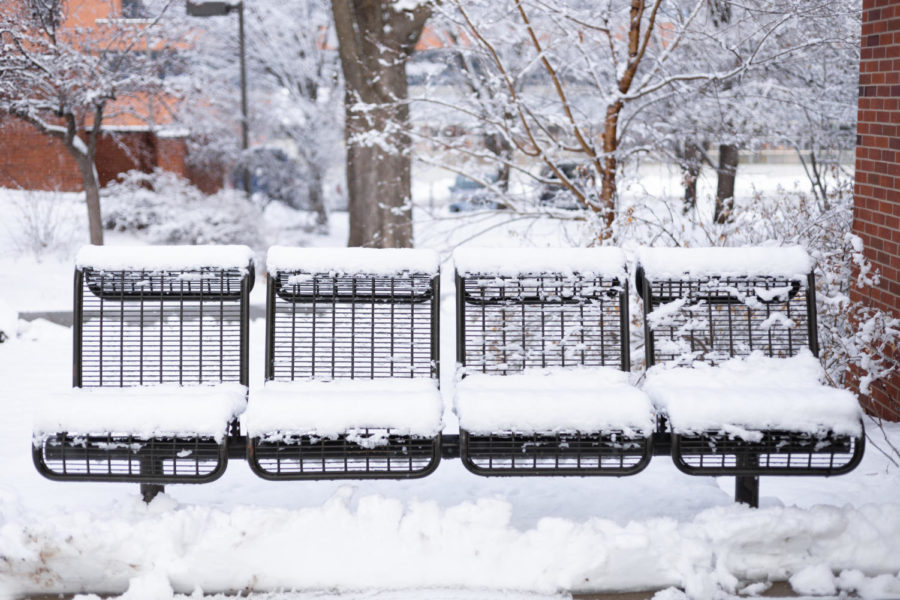COLUMN: Waters rescind, memories of 1993 remain
April 30, 2003
[Rick Mitchell, staff meteorologist for WOI-TV,] said that although the precipitation level will not set records, it has been the first time in three or four years that it is well above normal. The excessive moisture is not just happening in Iowa, but in the rest of the region as well, he said.
— Iowa State Daily, March 30, 1993
Everything before July was Act One. July was off the charts. Months like July are not supposed to happen.
— Des Moines Register, Aug.23, 1993
Two hundred and sixty-plus thousand people without water in the Des Moines area alone. Fourteen feet of water in Hilton Coliseum. Dozens of Midwestern counties — and one entire state — declared a federal disaster area. Those numbers all add up to one: 1993.
Only five years earlier, Iowa farmers had endured a horrible drought. Areas of land around lakes and reservoirs not seen in decades were exposed, and then a half-decade later were feet — or yards — under water.
There wasn’t a part of Iowa that wasn’t touched by the floods. By July 13, 56 counties had been declared federal disaster areas, at which point the towel was thrown in and the other 43 were labeled the same.
The warning signs were trickling in by the first day of spring. New Hartford and Tama were fighting rising waters in early April. Throughout spring, more rain came. By April 1, a flood warning was posted along the Iowa River from Marshalltown to Coralville Dam. Ledges State Park was under water by April 6.
The breaking point came in the middle of July. The Register headline on Monday, July 12, read “Floods cripple Des Moines; entire city without water” — but most of its subscribers didn’t see it. At my house, the Sunday Des Moines Register came as usual, but Monday’s didn’t show up. Neither did Tuesday’s. We later found out that the Register’s printing plant, at that time downtown, was inundated and the papers were being printed at other sites.
The July 13 Daily was devoted to the flood’s impact on campus. On July 9, Squaw Creek had decided to come in for breakfast at Maple-Willow-Larch. “It took 20 minutes from the time the water came in the door until the tables were floating,” said Stewart Burger, director of Iowa State’s food service, in the Daily. Residents were evacuated to Linden when the electrical vaults were submerged. During cleanup, 700 chairs and 1,000 square yards of carpet had to be thrown out.
And then there was that 14 feet of water in Hilton. Fourteen feet of brown liquid, and then a thick layer of brown muck. It was a short jump from the arena seating into the water, not that you’d want to. The basketball floor alone would cost $90,000 to replace. A picture shows the water at its peak covering the bottom half of a side scoreboard.
Trying to view all the damage was easier said than done. Each day the Register ran a thick list of locations that were impassable. Everything from countless gravel roads to the interstates near Des Moines had to be closed. In many cases, you simply could not get there from here. Roads set up as detours for other flooded roads sometimes became flooded themselves. Interstate 35 was closed at one point from Interstate 80 to Osceola. Neither old nor new Highway 30 was open west of Boone for much of July. In Davenport, River Drive, carrying highways 61 and 67, lived up to its name as it was only fit for boats and waterfowl.
And then there was Chelsea. Situated near Otter Creek Marsh, the creek and the Iowa River combined to inundate the tiny Tama County town for the sixth time in three years. “Boats could easily travel every street in town,” the Register said on July 23.
Southwestern Iowa was hit again in late July. By mid-August, though, the consensus was that it might really be over. And it was, except for all the cleanup by homes and businesses, forced to dry out or throw out irreplaceable possessions.
Through July 1993, the state set records for wettest one, two, three, 12, 24, 36, and 48 months in history. It was labeled a 500-year flood, something that should only occur at that magnitude twice a millennium.
If you have a chance, take a look at the photographs and news articles about the people of Iowa and the Midwest bonding together as never before to fight a natural disaster never seen before. You might remember the Flood of ’93 anyway, but the stories and images haven’t grown old in the decade since.






